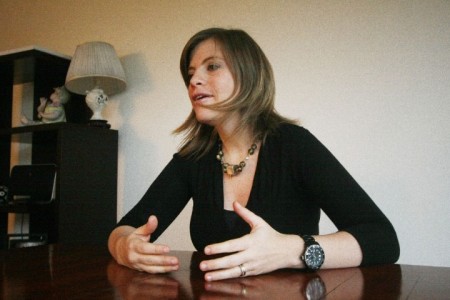Jun
7
The Inside Track On Lithium
June 7, 2011 | 1 Comment
Robert J. Moriarty’s 321Energy published George Mack’s talk with Daniela Desormeaux about the lithium trade. For our purposes, the question is can lithium supplies fully provision a fast growing market at prices that makes the batteries cost effective and competitive. The answers are compelling.
Daniela Desormeaux is an economist and an expert in industrial chemicals and natural resources. Prior to starting with signumBox, she was strategic marketing manager at SQM, where she was responsible for market intelligence on lithium, iodine and other industrial chemicals. Before joining SQM, she was an economic analyst at Cámara Chilena de la Construcción, a Chilean trade association focused on the housing and construction industries. The lady knows her stuff and the people that make the information credible and worthy of attention.

Daniela Desormeaux General Manager of Signumbox in Revista Minería Chilena. Click image for the largest view.
The page at 321Energy is a worthwhile read, but a summary will save some time. Ms. Desormeaux starts right in with describing the major market observers including investment banks that are looking for new investments, battery companies, as they’re interested in understanding the future of lithium because they have to buy it, and manufacturers of products using batteries – automakers in particular as use of the lithium will be substantial.
Ms. Desormeaux then explains how price is discovered outside the market. Since there isn’t a commodity exchange for lithium the deals are negotiated privately. But experts like Desormeaux can find the information as public companies in the industry must report publicly and gleaning can get observers close to the actual prices, at a several week delay.
Prices are set by the two largest firms in Chile because they can deliver in volume – some 50% of world demand. That’s a bit comforting, two big supplies assure some competition, and with only about a 50% market share the other half keeps prices leavened.
The industry is aware that the auto manufacturing business isn’t a sure thing for the future. Desormeaux explains that energy expense for charging, competition from improved internal combustion and other energy sources are going to compete. The future looks bright, but huge growth is very much speculative thought.
Desormeaux also offers some thought on the lithium for batteries history of the past years saying, “Years ago, some news articles questioned the ability of the world lithium supply to meet future requirements. I think that many people overestimated the growth in the demand of lithium and underestimated the amount of lithium resources in the world. That’s why we saw predictions of near-term high price grow. That’s absolutely not going to happen. My perception is that the future is promising and lithium demand will show interesting growth rates because it has many applications in addition to batteries. On the other hand, lithium is abundant as evidenced by a total of 80 exploration projects that have been announced globally in the last few years.
This reality check must be a body blow to some such as the Bolivian President who thinks that Bolivia is the “Saudi Arabia of Lithium”. Perhaps nearly two years of no results of note might have cleared that up for the Bolivians. Saudi or not, to get the investment, income, jobs and economic development Bolivia is going to have to be competitive. The monopolist or cartel dream is very dead.
For now the visible risk is political turmoil in Chile as the country is still at 50% market share. There is also a third firm angling for another extraction project in Chile looking for permitting. What the permitting deals are now might reveal the government’s interest in allowing a third player. The country might need to keep in mind that three market players would be safer for keeping up the income stream than two – especially when other countries are going to compete.
A noted above there are 80 new projects around the world. Lithium isn’t in short supply. The batteries we’ll need are going to be available. The price may have more to do with the technology and manufacturing costs than the lithium supply.
A big thanks to Bob Moriarty for getting the interview into circulation and thanks to George Mack for getting Ms. Desormeaux’s thoughts on the Internet.
Especially, a Thank You is sent to Ms. Desormeaux for the insight and information. Getting past the political, media and press view into hard reality is a valuable gift to all of us.
Comments
1 Comment so far


Jack Rickard’s EVTV blog has an interesting video about LiFePO4 battery structure, chemistry and temperature dynamics here:
http://jackrickard.blogspot.com/2010/12/what-he-said-what-i-said.html
The blog comment that no solid lithium is used in this increasing popular chemistry and that the lithium for those made in China comes from Chinese sources supports Ms. Desormeaux’s analysis.